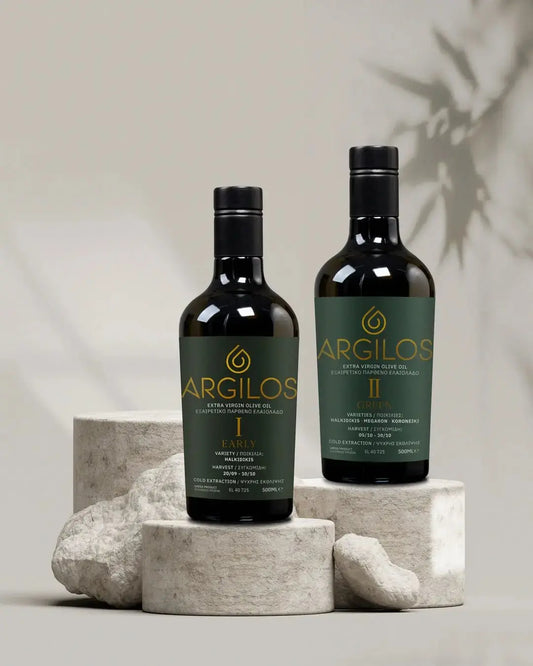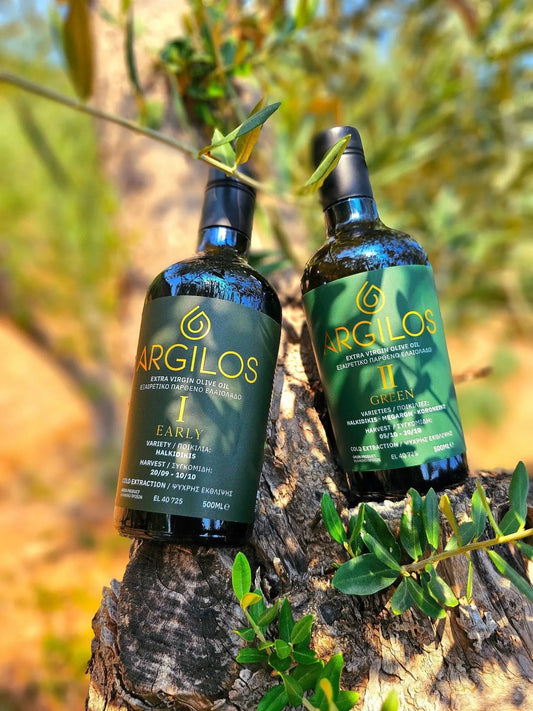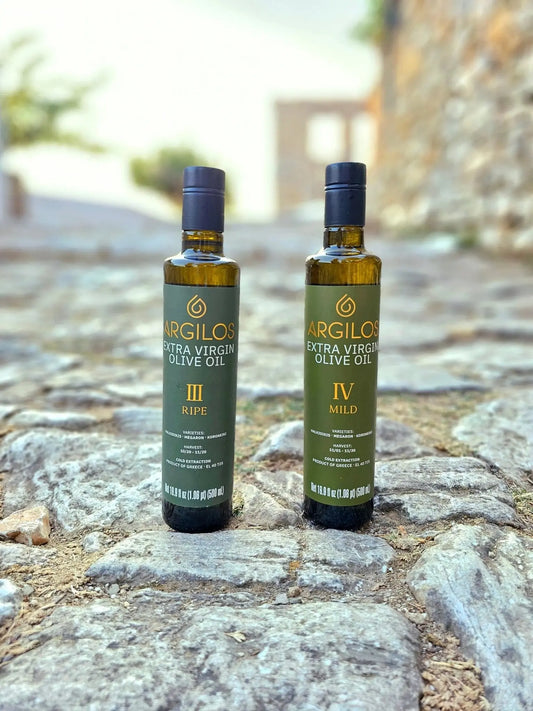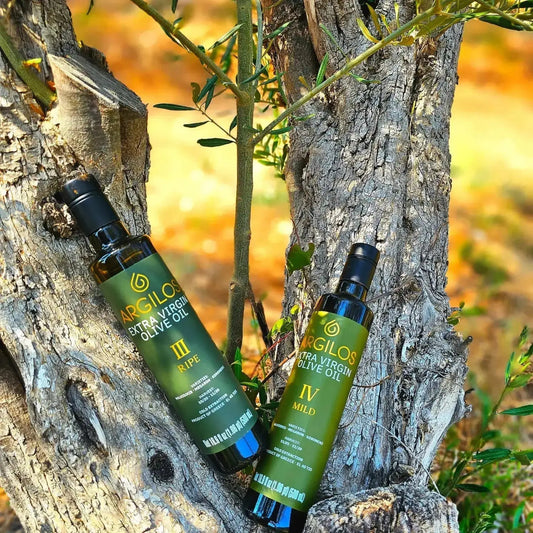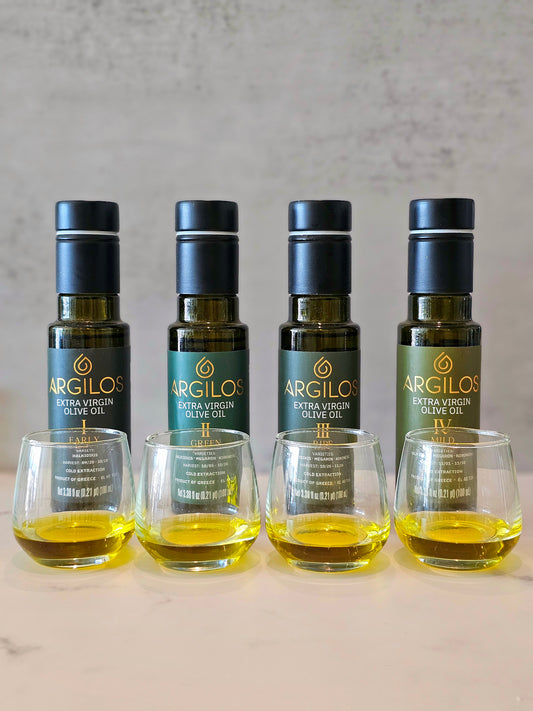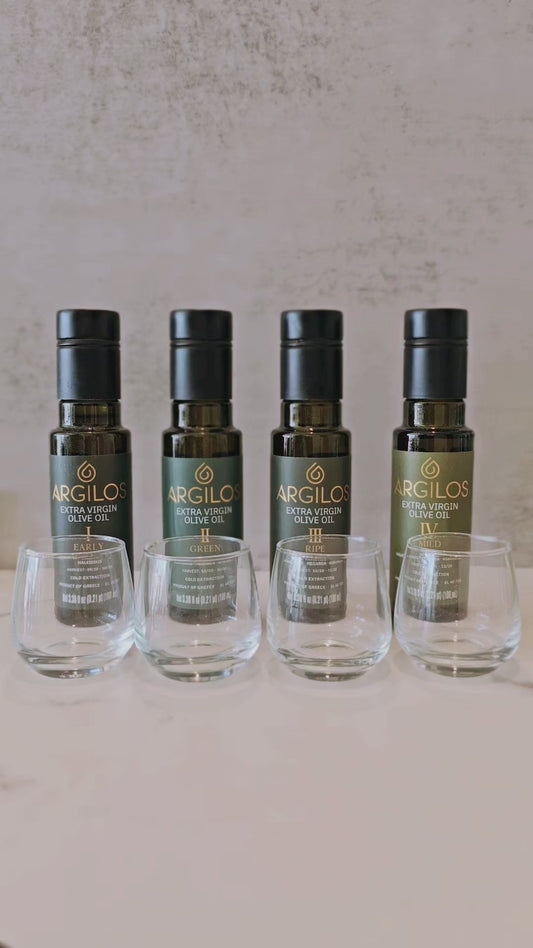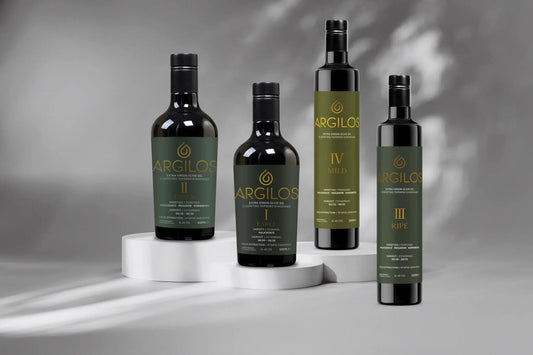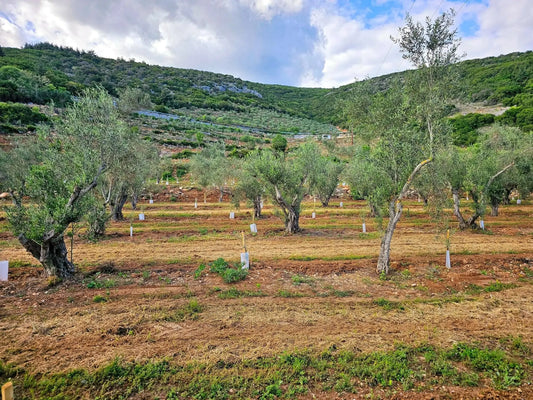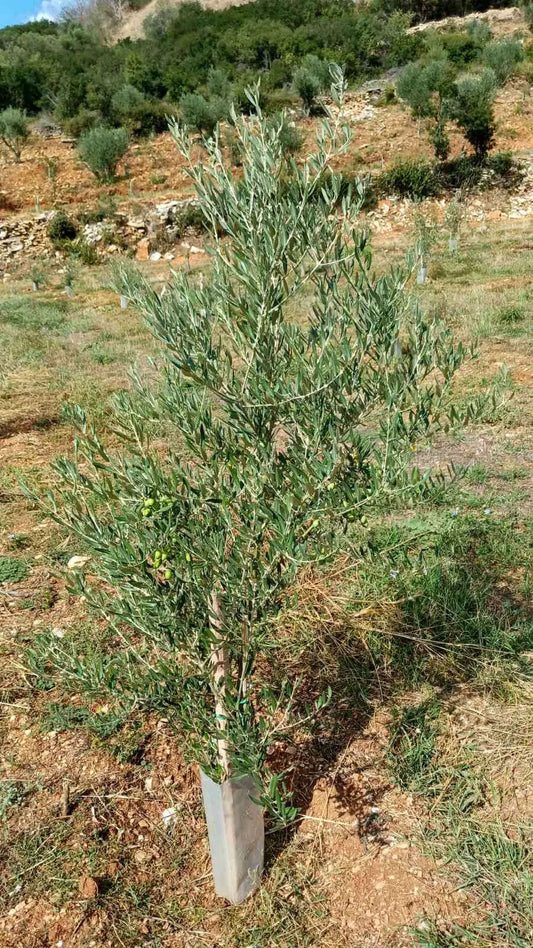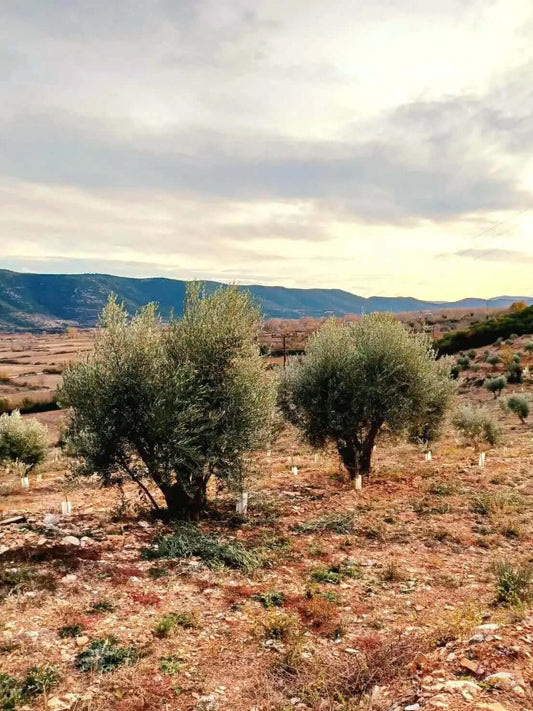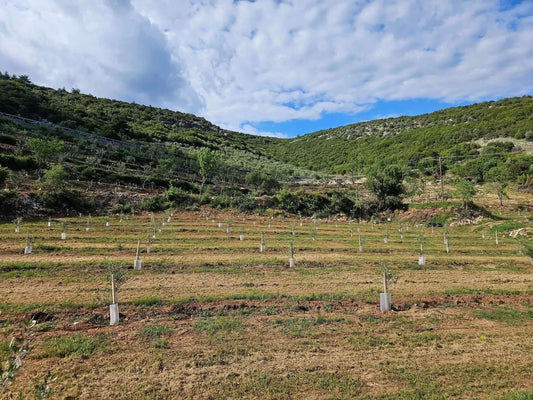
From Tree to Table: The Ultimate Guide to Extra Virgin Olive Oil
Share
Olive oil has been a pillar of Mediterranean life for thousands of years, offering exceptional health benefits, culinary versatility, and a sustainable footprint. But with so many types and labels on the market, understanding what makes extra virgin olive oil (EVOO) superior can feel overwhelming.
At Nostos Goods, we take pride in crafting Argilos Extra Virgin Olive Oil, sourced from the ancient groves of Mount Pangaion, Greece. This guide will walk you through everything you need to know about olive oil, from how it’s made, how to choose the best type, and how to cook with it safely and effectively.
1. What is Olive Oil? Understanding Grades & Categories
Not all olive oils are the same. There are two primary categories:
A. Virgin Olive Oils (Unrefined, Pure, Highest Quality)
These oils are extracted without heat or chemicals, preserving their natural flavors and nutrients.
- Extra Virgin Olive Oil (EVOO) – The highest quality, cold-pressed, with bold flavors and high polyphenol content.
- Virgin Olive Oil – Slightly lower quality than EVOO but still natural. Rarely sold in North America.
B. Refined Olive Oils (Processed, Neutral Flavor, Lower Nutrients)
These oils undergo processing to remove flaws and reduce bitterness.
- Regular Olive Oil – A blend of refined and virgin olive oils, making it lighter in taste but with fewer antioxidants.
- Light-Tasting Olive Oil – Highly refined for a neutral flavor, often used in baking and frying.
What to Choose? For the best health benefits and taste, always go for extra virgin olive oil.
2. The Journey from Olive to Oil
A. Harvesting: Timing is Everything
Olives are harvested at different ripeness levels, affecting flavor and polyphenol content:
- Early Harvest (Argilos I & II) – Green olives, bold & peppery taste, highest antioxidants.
- Ripe Harvest (Argilos III & IV) – Black olives, milder & buttery flavor, lower polyphenols but smoother taste.
B. Milling & Extraction: No Chemicals, Just Pure Olive Juice
- Olives are crushed into a paste.
- Malaxation (gentle stirring) helps release oil from the olive pulp.
- Centrifugation separates oil from water and solids.
- Filtration removes any remaining particles.
Unlike seed oils (canola, soybean), no chemical solvents or high heat are used, preserving all the natural antioxidants and nutrients.
3. The Health Benefits of Extra Virgin Olive Oil
EVOO isn’t just delicious, it’s a superfood backed by science.
- ❤️ Heart Health – Reduces bad cholesterol (LDL) and increases good cholesterol (HDL).
- 🧠 Brain Function – Protects against Alzheimer’s and improves memory.
- 🔥 Anti-Inflammatory – Rich in polyphenols that fight chronic disease.
- 🩸 Blood Sugar Control – Helps prevent type 2 diabetes.
- 🛡️ Cancer Protection – Studies suggest it may lower the risk of breast, prostate, and colon cancers.
💡 Did You Know? A Harvard study found that replacing butter with olive oil reduces heart disease risk by 15-21%!
4. Cooking with Olive Oil: Myths vs. Facts
Many people worry about olive oil’s smoke point, but the truth is:
✅ Extra virgin olive oil is one of the most stable oils for cooking—even at high temperatures.
✅ It outperforms canola, avocado, and coconut oil in frying and roasting.
✅ It enhances food’s nutrition by increasing the absorption of vitamins and antioxidants.
🔥 Best Uses for EVOO:
- Drizzling on salads & roasted veggies.
- Sautéing, grilling, and pan-frying.
- Baking (yes, it makes amazing cakes & cookies!).
🚫 Avoid: Deep frying at extreme temperatures. For that, use a more refined olive oil.
5. The Sustainability of Olive Oil
Unlike palm or soybean oil, olive trees are environmentally friendly:
🌿 Olive groves absorb CO₂, making them carbon sinks.
💧 Require less water than other oil crops (70% of groves are rain-fed).
🌍 Support biodiversity, preventing soil erosion.
At Nostos Goods, we go further by offering the "Adopt an Olive Tree" program, connecting people with the land and promoting sustainable agriculture.
6. How to Choose a Quality Olive Oil
🔍 Look for these signs of authenticity:
✅ Dark glass or tin packaging – Protects from light & oxidation.
✅ Harvest Date – Fresher is better. EVOO is best used within 18-24 months.
✅ NAOOA or Extra Virgin Alliance Seals – Ensures quality control.
✅ Taste it! – Fresh EVOO should have a fruity, slightly bitter, and peppery kick.
🚫 Avoid:
❌ Plastic bottles – Exposure to light degrades oil.
❌ Super-cheap olive oil – Often lower quality or blended.
❌ "First cold-pressed" labels – All EVOO is cold-extracted, making this phrase unnecessary.
7. Storing Olive Oil Properly
💡 Tips to keep your EVOO fresh:
- Store in a cool, dark place (not next to the stove!).
- Keep the bottle sealed to prevent oxidation.
- Use within 2-3 months after opening for peak freshness.
🚫 Don’t store it in the fridge! It can cause condensation and degrade quality.
Taste the Difference with Argilos EVOO
At Nostos Goods, our mission is to bring you the purest, most flavorful extra virgin olive oil from Mount Pangaion. Whether you’re drizzling it over a salad, cooking up a feast, or gifting a bottle to a loved one, Argilos EVOO is the ultimate choice for taste, health, and sustainability.

